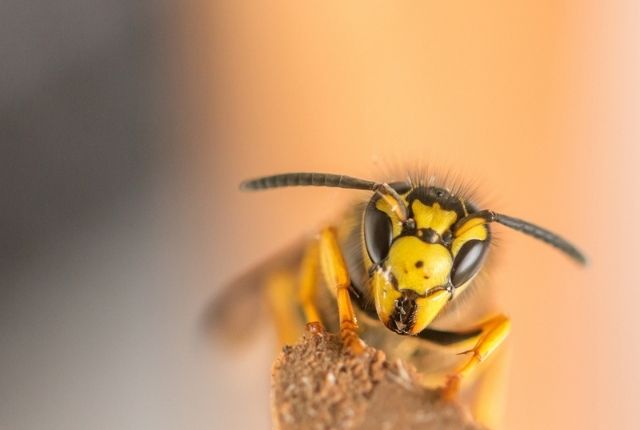Yellowjackets are not solitary wasps, they are social. They build hives of thousands of wasps and perform all work like raising larva and hunting for food together, they share responsibility and they also share the desire to defend the nest at all costs. Yellowjackets are very aggressive and will attack even if you do not approach the nest. They will attack in a swarm if their nest is directly threatened.
If you suspect wasp presence anywhere near or on your property, contact wasp removal Whitby for quick and safe removal.
The life cycle of the yellow jacket is like so. The queen yellowjacket which is about two inches long and bright orange leaves the nest in the late fall before the first frost. She hibernates under tree bark or in an old log. When the spring comes and the environment warms up the queen will leave her hibernation nest and search for a place to start building her new nest. This nest will be a small pocket lie nest where she will lay eggs, and leave food she hunts for the larva. In some time she will have her first sterile female workers to help build the nest and hunt. At this point, the queen remains in the nest permanently until the end of the fall when they die off. As the summer wains and the fall approaches, the queen will produce males that can mate and a series of female wasp queens who mate with the males. The males and sterile workers and the old queen dies. The new queens fly off to hibernate and start their nests in the spring. This process repeats every year and often a new queen will return to an old nest and reawaken it. So make sure to remove any yellowjacket or wasp nest from your property so another wasp doesn’t come around and try to use it.
The paper wasp is a solitary wasp. It does not make large nests. The most you will see in one nest is five or sex wasps in total. For this reason, the paper wasp is not very aggressive. They will only attack if their nest is directly threatened and they would rather scare you away than actually attack and risk being killed. The most interesting aspect of the paper wasp is how it builds its nest. The nest looks very much like a reversed umbrella with honeycomb-like sections on the inside of the bowl. The sections are used to lay individual eggs with insects that have been stung. The eggs hatch into larva, eat the insects and grow into an adult wasp.



